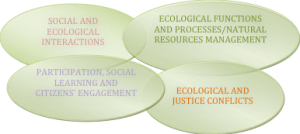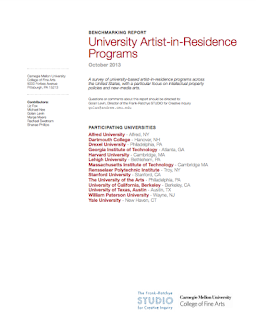Realising Potentials: Arts-based sustainability science is a two-day workshop conceived
as an experiential site for exploration and dialogue around arts-based sustainability
science.
Two main motivations guide the workshop:
The workshop will be held in Barcelona (Spain), in November 3rd-4th, 2016 at the Institute of Catalan Studies (Institut d’Estudis Catalans, IEC).
During the workshop, participants will engage in different experiential laboratories and discussions to share, collectively explore and critically inquire different experiences of arts-science hybridation -both from artists and researchers, methodological boundaries and challenges as sustainability researchers and practitioners, and the potentials of bringing together the arts and the aesthetics and sustainability science.
This workshop is coordinated by a group of sustainability scientists and practitioners who have experimented with a variety of arts-based approaches and it is open to both artists and researchers interested in this intersection.
Participants are invited to share art and research projects directly developed within collaborations among artists and scientists, dealing with one of the thematic areas in question. Understanding the four pillars of sustainability – environmental, social, cultural and economic - proposals should embed the interactions between social and natural sciences and the arts as insightful ways to generate new understandings and relationships, make people aware of the importance of a balanced relationship between human beings and the environment, in its diverse levels, and trying to encourage people to realize potentials as agents of social-ecological transformations.
More details.
Two main motivations guide the workshop:
- To open up an experiential space where artists and scientists can share, connect and expand different experiences, projects and discussions in the field of arts-based sustainability research. A space to experience others’ approaches, to play, to be surprised… A space to explore together, pushing our boundaries, acting/thinking out of the box.
- To catalyse a network of Arts-based Sustainability Science as a community of learning, practice and mutual support. A network expanding in time the sharing of the workshop and connecting different actors working in the field, so as to allow us to critically approach and expand different practices, collaborate together, and face different challenges as they emerge.
When and where?
The workshop will be held in Barcelona (Spain), in November 3rd-4th, 2016 at the Institute of Catalan Studies (Institut d’Estudis Catalans, IEC).
How?
During the workshop, participants will engage in different experiential laboratories and discussions to share, collectively explore and critically inquire different experiences of arts-science hybridation -both from artists and researchers, methodological boundaries and challenges as sustainability researchers and practitioners, and the potentials of bringing together the arts and the aesthetics and sustainability science.
Who?
This workshop is coordinated by a group of sustainability scientists and practitioners who have experimented with a variety of arts-based approaches and it is open to both artists and researchers interested in this intersection.
Participants are invited to share art and research projects directly developed within collaborations among artists and scientists, dealing with one of the thematic areas in question. Understanding the four pillars of sustainability – environmental, social, cultural and economic - proposals should embed the interactions between social and natural sciences and the arts as insightful ways to generate new understandings and relationships, make people aware of the importance of a balanced relationship between human beings and the environment, in its diverse levels, and trying to encourage people to realize potentials as agents of social-ecological transformations.
More details.






